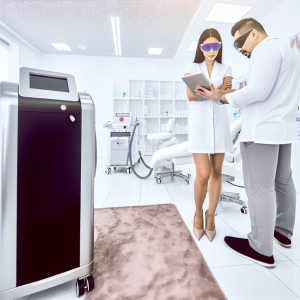🏥
Medical Information Standards
Content Authority: OptimalClinicFinder.com is a comprehensive medical directory platform connecting patients with qualified Dermal Fillers providers. Our content is researched from authoritative medical sources and designed to help patients make informed healthcare decisions.
How Restylane Works: Clinical Mechanism and Applications
Restylane belongs to a class of injectable treatments called hyaluronic acid dermal fillers, which work by supplementing the skin’s natural hyaluronic acid that diminishes with age. When skillfully injected into targeted areas, Restylane creates immediate volume enhancement while attracting and binding water molecules, providing natural-looking plumping and hydration effects.
The medication’s primary mechanism involves cross-linked hyaluronic acid gel particles that integrate with existing tissue structures. This integration creates a scaffold effect that supports skin architecture while maintaining natural facial movement and expression. The NASHA (Non-Animal Stabilized Hyaluronic Acid) technology used in Restylane products ensures consistent particle size and longevity, making it particularly effective for patients seeking predictable, natural-looking results.
💡
Did You Know?
Clinical studies show that Dermal Fillers patients achieve excellent results when combined with professional-grade aftercare products.
Clinical Research and Evidence Base
The clinical development of Restylane involved multiple large-scale randomized controlled trials, including the landmark REAL and HARMONY studies. These trials enrolled over 1,500 participants across diverse demographics and followed patients for up to 24 months. The primary endpoint data consistently demonstrated significant improvements in facial volume, wrinkle severity scores, and patient satisfaction compared to baseline measurements.
Subgroup analyses revealed that Restylane effectiveness extends across different facial areas and age groups, including patients seeking subtle enhancement and those requiring more significant volume restoration. The medication showed particular efficacy in nasolabial folds, marionette lines, and lip augmentation, with patient satisfaction rates exceeding 90% in clinical studies. Long-term safety studies have confirmed excellent tolerability profiles with minimal adverse events over extended follow-up periods.
Treatment Protocols and Clinical Management
Successful Restylane treatment requires careful patient assessment and individualized treatment planning. The initial consultation process includes comprehensive facial analysis, skin quality evaluation, medical history review, and discussion of realistic aesthetic goals. Healthcare providers must assess facial anatomy, injection site considerations, and develop comprehensive treatment strategies that may involve multiple sessions.
The standard treatment protocol involves precise injection techniques using various needle sizes and cannula options depending on treatment areas. Most patients receive 1-3 syringes per treatment session, with specific placement determined by individual anatomy and desired outcomes. Providers utilize multiple injection techniques including linear threading, serial puncture, and cross-hatching methods. Post-treatment care includes ice application, activity restrictions, and follow-up scheduling to monitor results and address any concerns.
💡
Quick Tip
Dermal Fillers works best when combined with healthy lifestyle choices for optimal results.
Safety Profile and Risk Management
The safety profile of Restylane has been extensively characterized through clinical trials and over 15 years of post-marketing surveillance involving millions of treatments worldwide. The most common adverse events include temporary injection site reactions such as swelling, bruising, redness, and tenderness, which typically resolve within 7-14 days. Healthcare providers can minimize these effects through proper injection technique, pre-treatment preparation, and post-care instructions.
Serious adverse events are extremely rare but require immediate recognition and management. These include vascular occlusion, which occurs in less than 0.01% of treatments, and delayed-onset nodules or granulomas. Risk factors for complications include previous filler treatments, autoimmune conditions, and injection in high-risk vascular areas. Experienced providers maintain emergency protocols including immediate access to hyaluronidase for filler reversal and established relationships with ophthalmology and vascular surgery specialists when needed.
Restylane Fillers Cost Analysis and Pricing Factors
The restylane fillers cost structure involves multiple variables that significantly impact final treatment pricing. Base product costs represent only one component, with provider expertise, facility overhead, geographic location, and treatment complexity all contributing to final pricing. Premium locations in major metropolitan areas typically charge 30-50% more than smaller markets due to higher operational costs and increased demand for experienced practitioners.
⚠️
Safety First
Always consult a qualified medical professional before starting Dermal Fillers. Results vary by individual.
Provider qualifications significantly influence pricing, with board-certified plastic surgeons and dermatologists typically charging premium rates compared to other medical professionals. This pricing differential reflects extensive training, experience managing complications, and superior aesthetic outcomes. Many patients find the investment in experienced providers worthwhile due to better results, reduced complication risks, and more natural-looking outcomes that require fewer touch-up treatments.
Insurance Coverage and Payment Options
Restylane treatments are considered elective cosmetic procedures and are not covered by traditional health insurance plans. However, the aesthetic medicine industry has developed numerous financing options to make treatments more accessible. Many practices offer in-house payment plans, third-party medical financing through companies like CareCredit and Alphaeon Credit, and package pricing for multiple treatment areas or sessions.
✓
Why Choose Dermal Fillers?
●
Clinically proven
●
FDA approved
●
Minimal downtime
●
Long-lasting
Some patients may qualify for tax benefits by using Health Savings Account (HSA) or Flexible Spending Account (FSA) funds for treatments that address functional concerns, though purely cosmetic applications typically don’t qualify. Many practices offer loyalty programs, seasonal promotions, and package deals that can reduce per-syringe costs for patients planning multiple treatments or maintenance schedules.
Provider Selection and Treatment Access
Choosing an experienced healthcare provider is crucial for optimal Restylane treatment outcomes and safety. Patients should seek providers with specific expertise in facial anatomy, extensive injection experience, and comprehensive training in dermal filler techniques. Board certification in dermatology, plastic surgery, or facial plastic surgery, combined with ongoing education about current injection techniques and complication management, represents the gold standard for provider selection.
Access to expert Restylane treatment has expanded significantly as more healthcare providers gain specialized training in aesthetic medicine. Many dermatology and plastic surgery practices now offer comprehensive filler services, while medical spas staffed by qualified physicians provide additional access points. Patients should verify provider credentials, review before-and-after photos, and ensure the practice maintains proper safety protocols and emergency preparedness for managing potential complications.
📚 Medical Authorities & Professional Standards
All Dermal Fillers procedures should be performed by licensed medical professionals following established clinical guidelines and safety protocols.
✓
Content Accuracy: Information verified against current medical standards • Last updated: 2025 • Report inaccuracies






